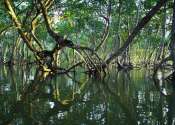Satellite maps boost mangrove conservation in China
Mangroves are vital ecosystems along coastlines, providing essential services such as coastal protection, biodiversity enhancement, and carbon sequestration. Despite their critical importance, effective management of these ...








